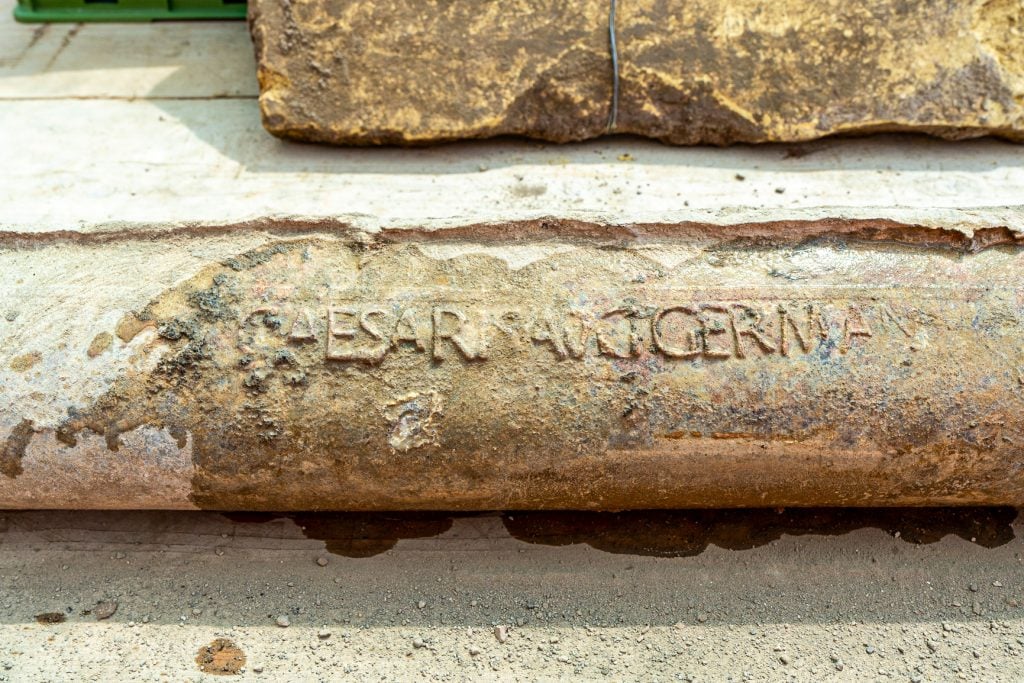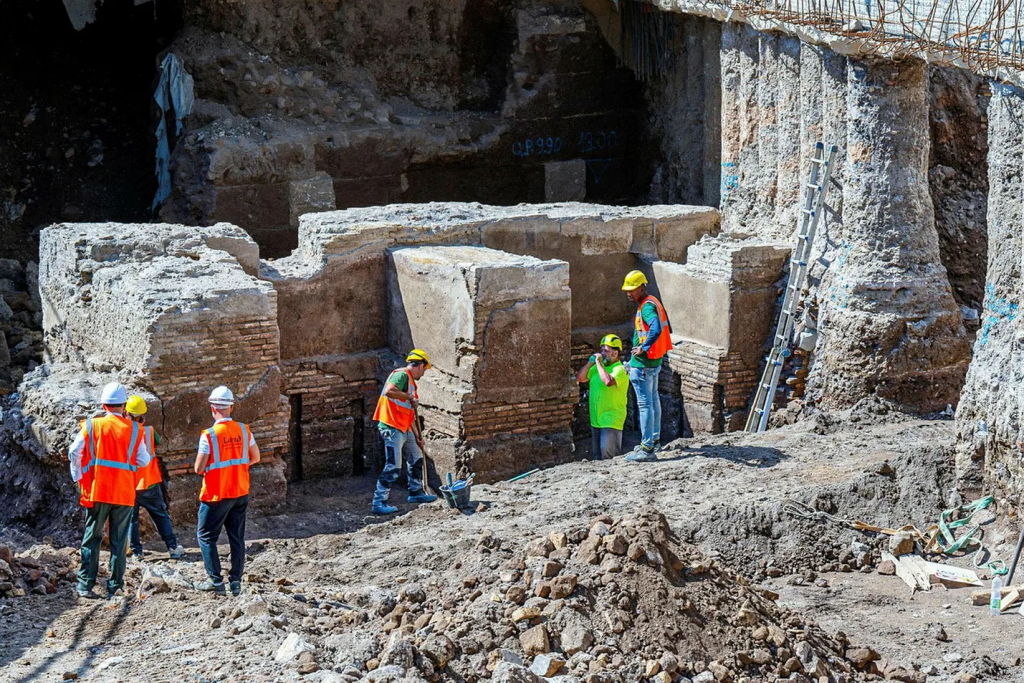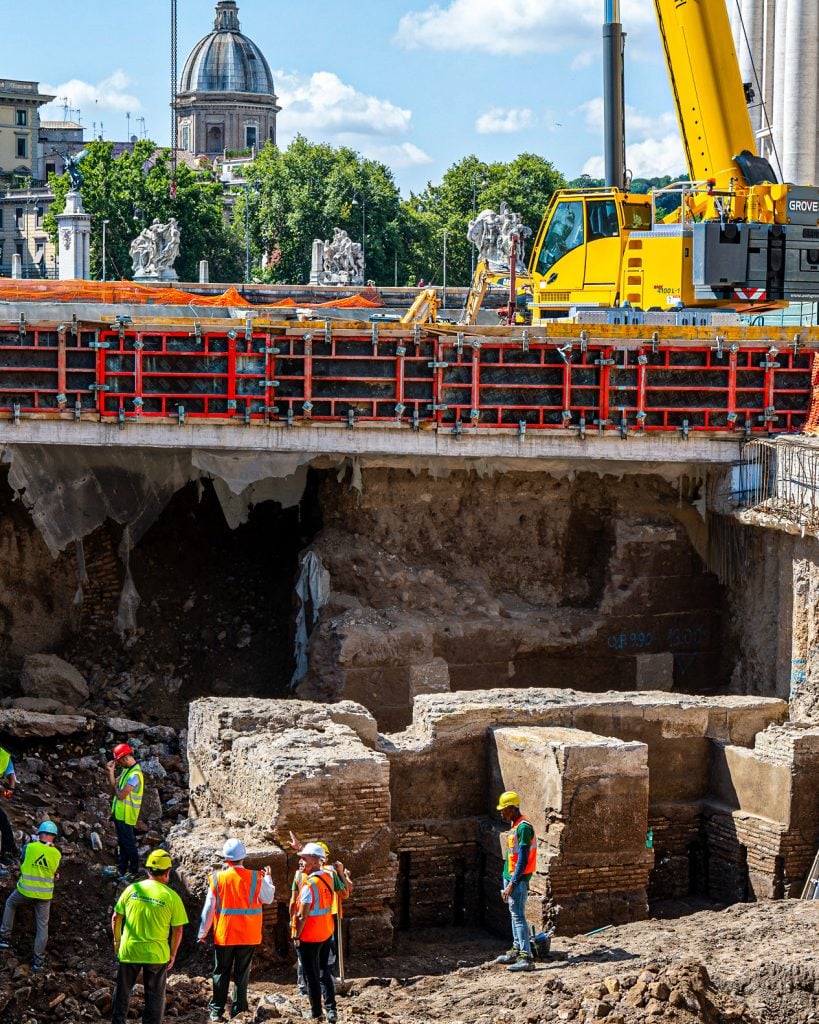Archaeology & History
Construction Workers in Rome Discover Emperor Caligula’s Garden
The discovery occurred during work to pedestrianize Piazza Pia ahead of Jubilee 2025.

The discovery occurred during work to pedestrianize Piazza Pia ahead of Jubilee 2025.

Richard Whiddington

The cliché runs that you can’t fix a water main or break ground in the Italian capital without uncovering Roman treasure. So it has been proven, with the Italian Ministry of Culture announcing that a major project to pedestrianize an area around the Vatican has discovered a garden belonging to Emperor Caligula.
In fact, it’s the second fortuitous discovery: Caligula’s garden was found during efforts to relocate a fullonica, a Roman workshop where clothes were cleaned. On the banks of the River Tiber, archaeologists have identified a travertine wall, the foundations of a colonnaded portico, and a large open area that would have comprised the garden.
The connection with Caligula, the first-century tyrant with a reputation for eccentricity and capriciousness, is offered through a lead water pipe stamped with the emperor’s full name: Gaius Caesar Augustus Germanicus. (His nickname means “little boot” and was bestowed for the miniature military footwear his father dressed him up in as a tyke.)

The embankment on the River Tiber once held Caligula’s grand garden. Photo: Italian Ministry of Culture/Fabio Caricchia.
The garden’s location is also supported by textual evidence from Philo of Alexandria, a contemporary Hellenistic Jewish philosopher who lived in the Roman province of Egypt. In 40 C.E., Philo traveled to Rome as part of a delegation of Alexandrian Jews seeking Caligula’s support amid ongoing conflict between the city’s Jewish and Greek communities. Philo wrote that he was received in the Gardens of Agrippina, a vast estate overlooking the Tiber that included a monumental portico.
“The similarity between the remains found and the description of the Alexandrian historian suggests that the excavation of Piazza Pia was the site of this meeting,” says the Italian Ministry of Culture.
Archaeologists are now more confident in mapping the Gardens of Agrippina on the modern city. In the early 20th century, another lead pipe was discovered in the area, stamped with the name of Iulia Augusta, the second wife of Emperor Augustus and grandmother of Germanicus. This offers a lineage of the garden’s inheritance with Germanicus passing it on to his wife Agrippina the Elder, who then passed it onto her youngest son, Caligula.

Excavations taking place along the River Tiber. Photo: Italian Ministry of Culture/Fabio Caricchia
The excavation, overseen by Daniela Porro, Rome’s archeological superintendent, also uncovered Campana tiles, a period terracotta relief typically used as friezes on the top of walls. The tiles feature “unusual mythological scenes, [which were] reused as covers for the sewers of the fullonica,” according to the Italian Ministry of Culture. “Originally, they probably covered some structure in the garden, possibly the portico itself.”
The discoveries are the unexpected consequence of a $75 million project to pedestrianize Piazza Pia by directing traffic through an underpass. The work is part of Jubilee 2025, a once-every-quarter-century Vatican event designated as a special year of grace by the Catholic Church. It drives millions of pilgrims to Rome and unlocks special Jubilee funding to be spent on infrastructure projects.

Pottery shards found in the laundry complex on top of Caligula’s garden. Photo: Italian Ministry of Culture/Fabio Caricchia.
Rome’s mayor, Roberto Gualtieri, has said such archaeological discoveries will not slow down the Jubilee project, which is slated to be completed by December 2024.
It’s the second garden associated with Caligula to have been discovered this century. In 2006, the Lamian Gardens, the place where the emperor was cremated and briefly buried following his assassination, was discovered during the digging of an underground garage. The gemstones, coins, ceramics, and other treasures unearthed are now on display at the Museo Ninfeo.